In the misty uplands of Waimea, through the rolling pastures of Molokaʻi, and across the sprawling ranches of upcountry Maui, a powerful legacy lives on—that of the paniolo, Hawaii’s cowboys. While many recognize them for their rugged horsemanship and contributions to island ranching, few understand the depth of their impact on Hawaiian identity. Beyond wrangling cattle and riding horseback, the paniolo were instrumental in preserving Hawaiian language and culture during one of the most turbulent eras in the islands' history.
The story begins in the early 19th century. After British explorer George Vancouver gifted cattle to King Kamehameha I in the 1790s, those animals multiplied unchecked, becoming a growing threat to farmland and forests. To manage the explosive cattle population, Kamehameha III (Kauikeaouli) invited experienced Mexican vaqueros—Spanish-speaking cowboys from California—to the Hawaiian Islands in the 1830s.
These vaqueros brought with them expertise in ranching, roping, saddle-making, and horsemanship. Hawaiian men were quick learners, absorbing these new skills and adapting them to their own environment. Over time, the Hawaiian term paniolo, believed to derive from “Español,” came to represent this new breed of cowboy—one who blended Hawaiian tradition with Mexican technique.
But the influence of these vaqueros ran deeper than the physical skills they taught. They shared a way of life grounded in respect for the land, strong family ties, music, and storytelling—values that mirrored those in traditional Hawaiian society. The result was not just a new profession, but a new cultural identity: the paniolo, proud stewards of the land (kuleana) and protectors of Hawaiian spirit.
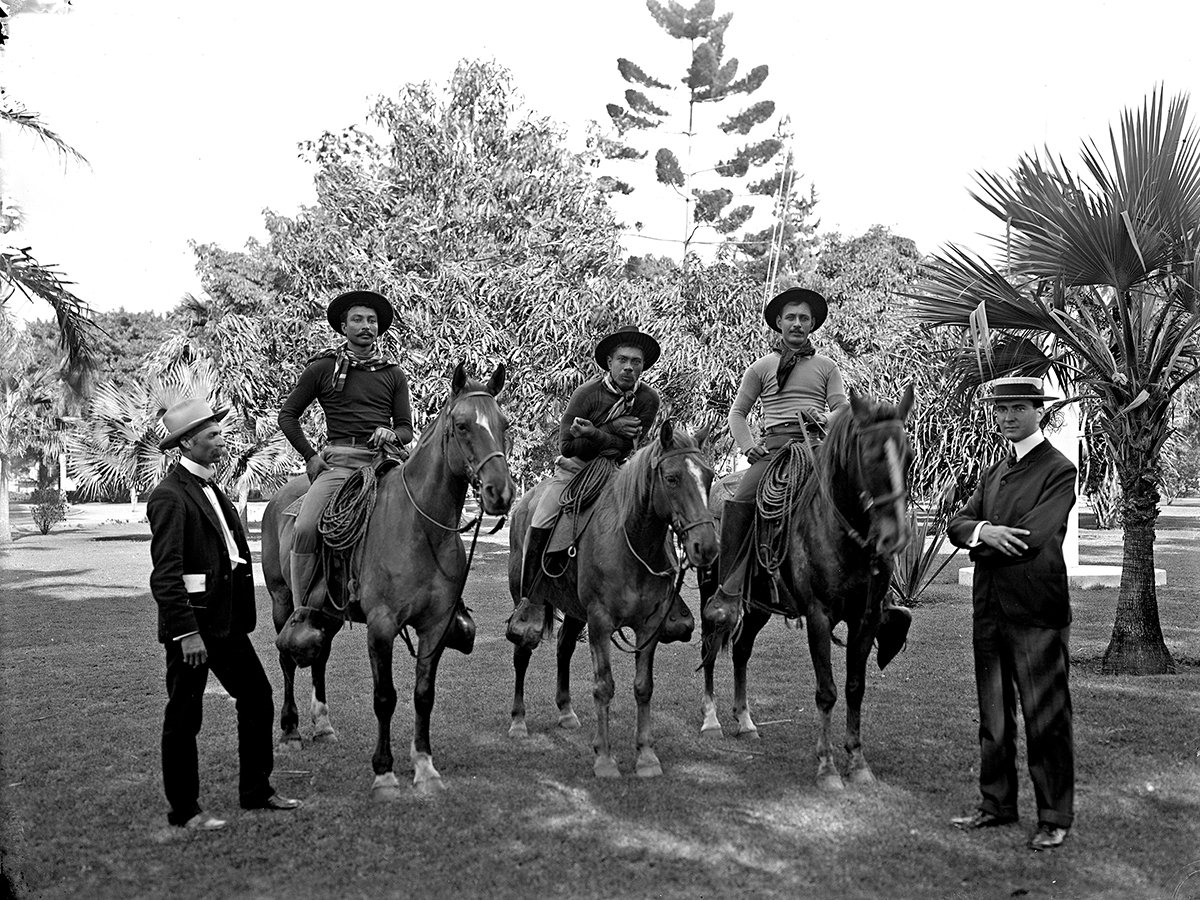
While the paniolo helped birth a thriving ranching economy, their most profound contribution may have come decades later, when Hawaiian identity faced near erasure.
Following the illegal overthrow of the Hawaiian Kingdom in 1893 and the subsequent annexation by the United States in 1898, sweeping changes were forced upon the islands. In 1896, Hawaiian was banned as a language of instruction in schools. Speaking the language in public was discouraged or outright punished sometimes, punishable by death. English-only policies became a tool of cultural suppression, designed to assimilate Native Hawaiians into Western norms.
In cities and towns, this pressure took its toll. Hawaiian children were discouraged from speaking their mother tongue, and generations began to grow up without fluency in their native language. But in the countryside—on the remote ranches of Hawaiʻi Island, Molokaʻi, and Maui—the story was different.
The paniolo lived far from government centers and urban control. On the ranches, Hawaiian remained the language of daily life. Cowboys spoke Hawaiian in the fields, at home, in song, and in prayer. Oral traditions, chants (oli), and ancestral knowledge were passed from parent to child without interruption. These ranchlands became cultural sanctuaries, where Hawaiian identity endured in spite of official efforts to silence it.
The paniolo didn’t set out to be activists or revolutionaries—they simply lived according to the values of their ancestors. In doing so, they kept the language alive when it was outlawed. They kept aloha ʻāina—love of the land—at the core of their daily lives. They upheld ʻohana—family—and the importance of story and song. And perhaps most powerfully, they maintained a sense of pride in being Hawaiian, even when the dominant culture tried to erase it.
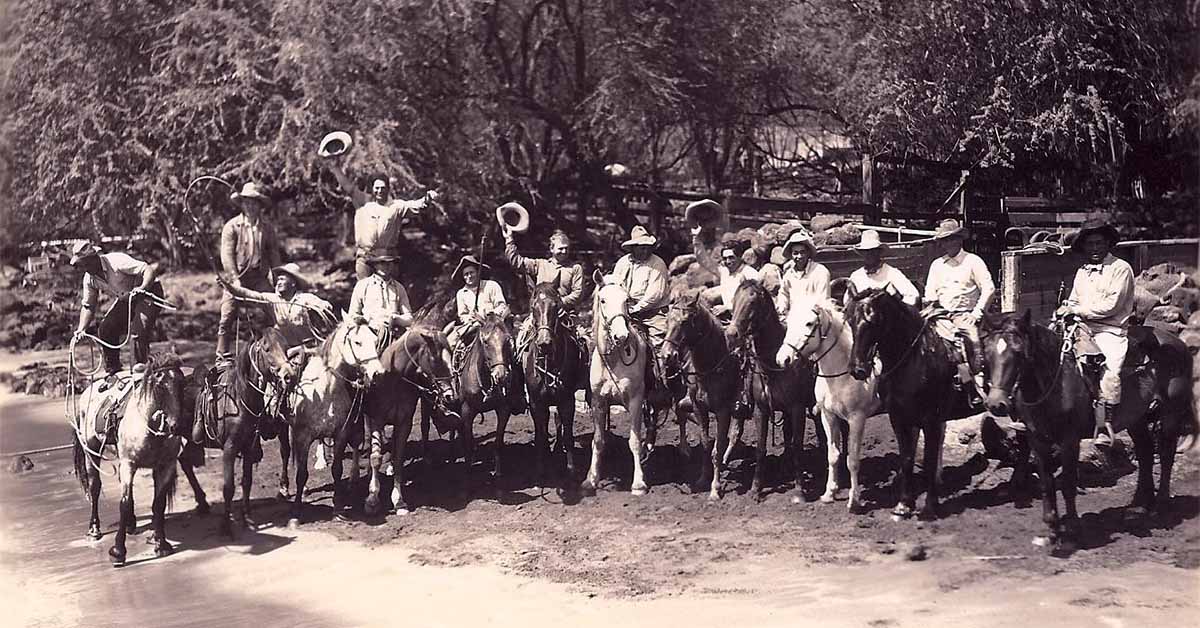
The legacy of the paniolo endures today not just through ranching, but through rodeo culture, which remains vibrant in rural Hawaiʻi. These events—held annually in towns like Makawao, Waimea, and Kaunakakai—are more than just competitions. They are celebrations of identity, where Hawaiian language is spoken freely, and traditions are proudly displayed.
Slack-key guitar and mele paniolo (cowboy songs) echo through the air, telling stories of hardship, humor, and heritage. Rodeos serve as modern spaces where Hawaiian values and community thrive—further testament to the paniolo’s role in cultural preservation.
If you are interested in booking tickets or more information on the Makawao Rodeo here are links to booking, etc.
Bookings: oskiericeeeventcenter.com
Information: https://bossfrog.com/makawao-rodeo/general/

When the Hawaiian Renaissance began in the 1970s—a movement aimed at restoring language, culture, and sovereignty—it found that the roots had never been fully lost. In part, that was thanks to the paniolo. The oral language, still spoken fluently by many elder cowboys, became a lifeline for linguists and educators rebuilding curriculum for Hawaiian language immersion schools. The values embedded in paniolo life—self-reliance, stewardship, and storytelling—matched perfectly with the goals of the movement.
Today, many Hawaiian immersion programs and cultural centers recognize the contribution of paniolo families in preserving the language. Elders who once roped cattle are now seen as cultural heroes—unintentional but vital defenders of Hawaiian heritage during a time of crisis.
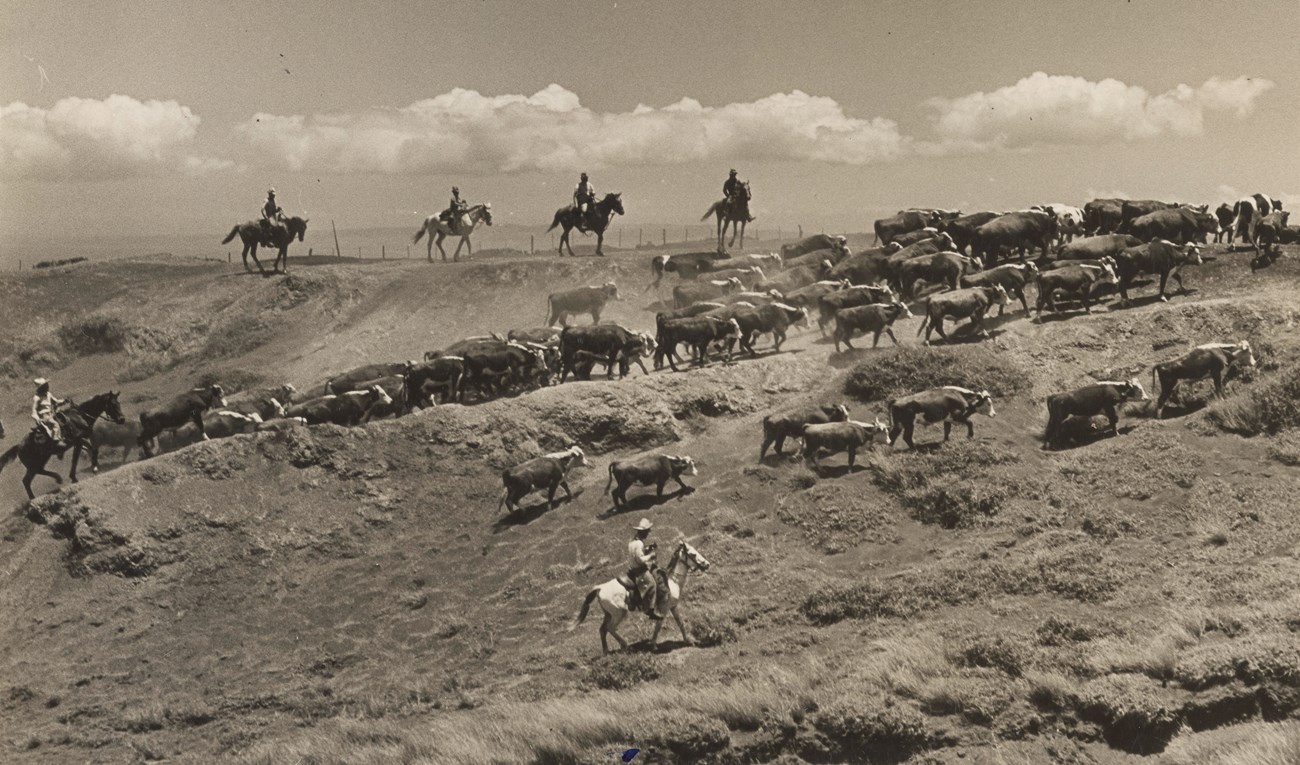
The story of the paniolo is not just about cattle or cowboy hats. It’s about resilience. It’s about a group of people who, through quiet strength and cultural pride, preserved a language and identity that others tried to erase. The legacy of the Mexican vaqueros lives on through them, but the spirit of the paniolo is deeply, undeniably Hawaiian.
So next time you hear a cowboy song in Hawaiian, see a young rider at a rodeo, or visit the open pastures of upcountry Maui, remember: you're witnessing the continuation of a legacy that refused to be silenced.
Here is a link to the many other blogs about and of Hawai'i / Maui:
Perched over 10,000 feet above sea level, Haleakalā Crater in Maui offers one of the most extraordinary stargazing experiences on Earth. This dormant volcano, located within Haleakalā National Park, is renowned for its pristine night skies, minimal light pollution, and breathtaking celestial views. Whether you're an amateur astronomer, a seasoned stargazer, or simply seeking a unique adventure, Haleakalā's summit provides an unforgettable encounter with the cosmos.
Haleakalā's summit stands at 10,023 feet, placing it above a significant portion of Earth's atmosphere. This elevation, combined with the area's dry air and isolation from urban light sources, creates optimal conditions for observing stars, planets, and deep-sky objects. The name "Haleakalā" means "House of the Sun" in Hawaiian, and according to local legend, the demigod Māui lassoed the sun from this very summit to slow its journey across the sky.
The crater itself is an erosional valley nearly 7 miles across, 2 miles wide, and 2,600 feet deep. Its unique geological features and high elevation contribute to the area's exceptional visibility, making it a prime location for both amateur and professional astronomers.

For those who prefer a self-guided experience, Haleakalā National Park welcomes visitors to stargaze from the summit. The park's high elevation and remote location offer some of the darkest skies in the United States. However, it's essential to come prepared: temperatures can drop into the 40s or lower, even during summer months. Dress in layers, including a windproof outer layer, and consider bringing gloves, a hat, and a blanket for added warmth.
A red flashlight is recommended to preserve night vision, and a reclining chair can enhance comfort during extended viewing sessions. Remember to allow your eyes at least 30 minutes to adjust to the darkness for optimal stargazing.
Please note that overnight stays within the park are only permitted in designated campgrounds, such as Hosmer Grove Campground in the summit district. Sleeping in vehicles outside of these areas is prohibited. Here is a direct link to book at Hosmer Grove if you plan to view the cosmos.
https://www.recreation.gov/camping/campgrounds/10068557
Here is a video about the sunset and stargazing atop the world!
For a more structured experience, several tour operators offer guided stargazing adventures on Haleakalā. These tours often include transportation, expert commentary, and high-powered telescopes for an in-depth exploration of the night sky.
Maui Stargazing provides an extensive tour of Haleakalā National Park, featuring a scenic sunset picnic followed by a science-based telescope adventure. Guests can observe visible planets and deep-sky objects of the Milky Way, including nebulae and star clusters, through a 12-inch aperture Dobsonian telescope. The tour includes winter jackets, fleece hats, gloves, and insulated snow pants to ensure comfort during the chilly evening hours.
https://www.mauistargazing.com/
Maui All Stars offers a sunset and stargazing tour that allows guests to observe the moon, stars, and galaxies using a large GPS telescope and laser pointer. The experience is hosted by an expert guide and includes convenient pick-up locations around the island.
https://www.hawaiiactivities.com/en/hawaii/maui/a/176011
Plan Ahead: Check the weather forecast before your trip, as conditions can change rapidly. Also, familiarize yourself with the park's regulations and obtain any necessary permits or reservations in advance.
Haleakalā holds deep spiritual significance for Native Hawaiians, who consider the summit a sacred place used for religious ceremonies and connecting with ancestors. Visitors are encouraged to approach the area with respect and mindfulness, honoring its cultural importance. Recent proposals to construct new telescopes on the summit have faced opposition from the local community, highlighting the need to balance scientific exploration with cultural preservation.
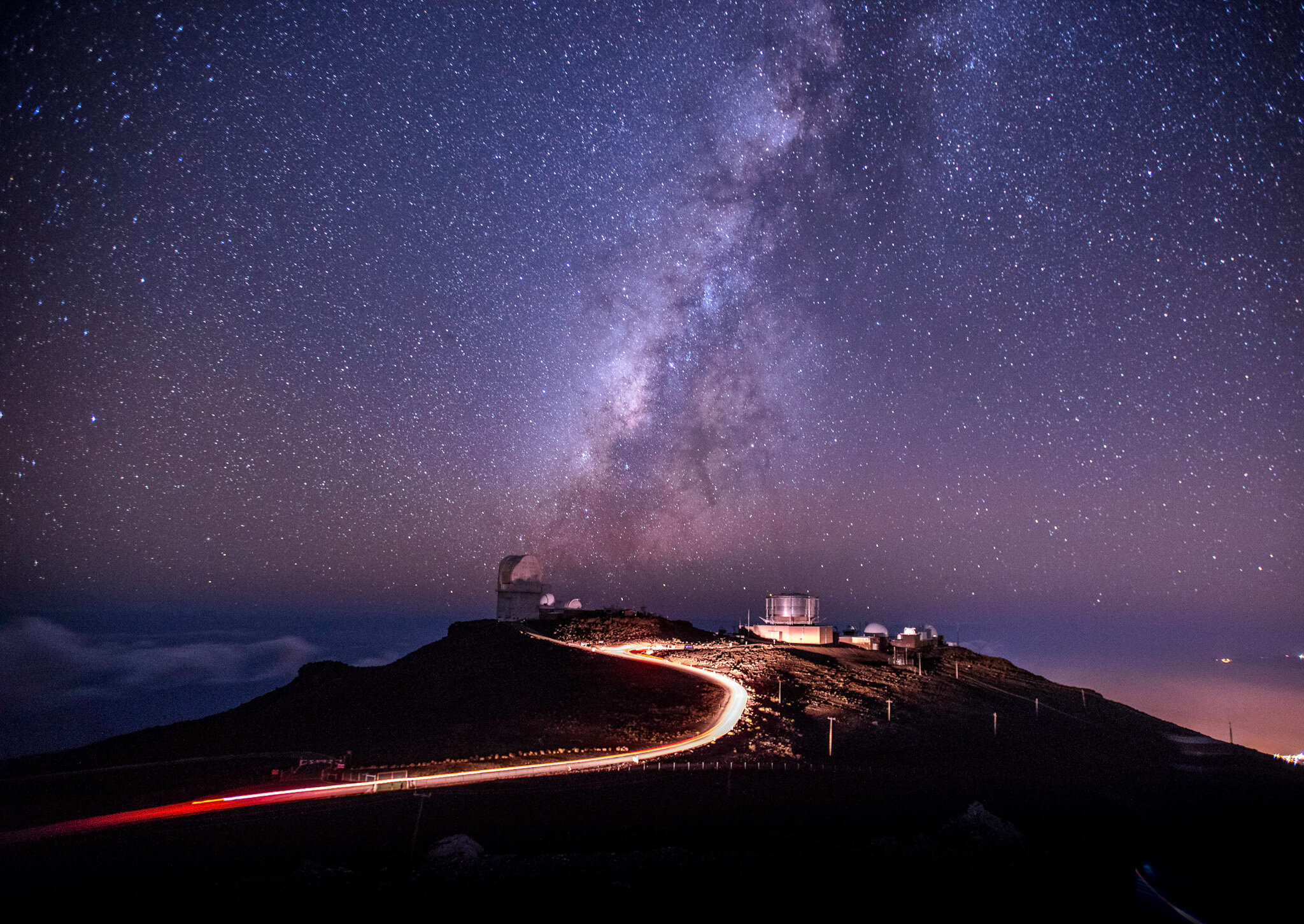
Stargazing at Haleakalā Crater is more than just a visual delight; it's a profound experience that connects you with the universe and the rich cultural tapestry of Hawaii. Whether you choose a guided tour or a self-directed adventure, the summit offers an unparalleled opportunity to witness the wonders of the night sky in a setting of natural and spiritual grandeur.
Here are the many informational blogs about life on Maui, Hawaii and the many things to do:
Language is more than a means of communication—it is a reflection of culture, history, and identity. Nowhere is this more evident than in Hawaii, where a unique form of English-based creole known as "Pidgin" has evolved over the past century. Officially referred to as Hawai‘i Creole English, Pidgin is a rich, dynamic language that encapsulates the multicultural heritage of the islands. Its development is deeply tied to Hawaii's complex social, economic, and cultural history, particularly during the plantation era. Today, while sometimes misunderstood, Pidgin remains a vital and expressive part of local identity.
The roots of Pidgin in Hawaii can be traced back to the mid-19th century, during a period of significant immigration and economic transformation. Following the decline of the whaling industry, Hawaii shifted toward an agricultural economy dominated by sugarcane and pineapple plantations. These plantations required a large labor force, which led to an influx of workers from China, Japan, Portugal, Korea, the Philippines, Puerto Rico, and other parts of the world.
These immigrant groups, each speaking their own languages, had to find ways to communicate with one another and with English-speaking plantation owners. This necessity gave birth to a rudimentary contact language—an early form of Pidgin—that incorporated vocabulary primarily from English, with grammatical influences from Hawaiian, Japanese, Portuguese, Cantonese, and other languages. At this stage, the language was not yet fully developed or standardized; it functioned mainly as a tool for basic communication.

Over time, as immigrant families settled and generations were born and raised in Hawaii, Pidgin evolved from a simple trade language into a fully developed creole. By the early 20th century, children growing up in multilingual communities began acquiring Pidgin as their first language. This generational shift marked the transformation from a pidgin (a simplified language used for specific purposes) into a creole (a native language with its own stable grammar and vocabulary). For example, instead of saying "He is going to the store," a Pidgin speaker might say, "He stay going store.", another example is many here in Hawaii will say "close the light", instead of "Turn off the light.
Here is a short video talking about the origins of pidgin in Hawaii:
Here is a website that features some of the most common pidgin terms used in Hawaii:
For many in Hawaii, Pidgin is more than a way of speaking—it is an expression of local identity and solidarity. It reflects shared history, values, and a sense of place. It often carries nuances and cultural references that are difficult to translate into standard English. As such, Pidgin is commonly used in informal settings, storytelling, comedy, local literature, and even political discourse to connect authentically with local audiences.
Pidgin is a linguistic treasure that tells the story of Hawaii’s multicultural roots and the resilience of its people. Born out of necessity, shaped by diversity, and sustained by community, it continues to thrive as a powerful marker of identity and cultural pride. As public understanding and appreciation grow, Pidgin stands as a testament to Hawaii’s rich linguistic tapestry—one that deserves both recognition and respect.
Our website features more blogs about life in Hawaii, whether is on the history, culture, and activities!
On August 21, 1959, Hawaii officially became the 50th state of the United States. This landmark event marked the culmination of a long and complex history involving indigenous sovereignty, strategic military importance, cultural transformation, and political negotiation. While the date of statehood is straightforward, the story behind how Hawaii became a state is anything but simple. Understanding Hawaii’s path to statehood requires a deeper look into its monarchy, its annexation, its role in American defense strategy, and the political movements of the 20th century.
Before becoming a U.S. state, Hawaii was an independent and internationally recognized sovereign nation. The Hawaiian Kingdom was established in 1795 under King Kamehameha I, who unified the Hawaiian Islands into a single kingdom. Over the next several decades, the Kingdom of Hawaii maintained its independence, signed treaties with major world powers, and even had diplomatic missions abroad.
This period of sovereignty saw the development of a complex governmental system, a constitution, and a thriving multicultural society. However, Hawaii’s strategic location in the Pacific and its fertile lands made it increasingly attractive to foreign powers, particularly the United States.

In 1893, the sovereign Kingdom of Hawai‘i was overthrown in a coup d’état orchestrated by a small group of American and European business interests, with the support of the U.S. Minister to Hawai‘i and U.S. Marines. Queen Liliʻuokalani, Hawai‘i’s last reigning monarch, was deposed under duress in an act widely condemned as illegal and unjust.
Despite strong opposition from Native Hawaiians and an official investigation by President Grover Cleveland that acknowledged the illegality of the coup, the provisional government pressed forward. In 1898, the United States annexed Hawai‘i through the Newlands Resolution—a controversial move lacking a treaty of annexation ratified by the U.S. Senate or the consent of the Hawaiian people.
This chapter in history remains a source of deep pain and protest. In 1993, on the 100th anniversary of the overthrow, the U.S. government formally apologized through the Public Law 103-150 (the "Apology Resolution"), acknowledging that the overthrow was unlawful and that the Native Hawaiian people never relinquished their claims to sovereignty.
The legacy of this event continues to influence Hawaiian identity, cultural preservation, and calls for justice and self-determination today.
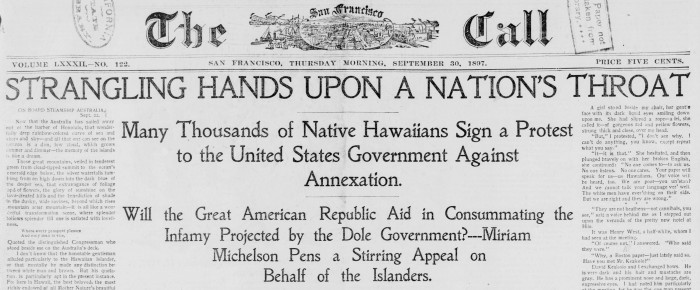
Hawaii’s importance to the U.S. was dramatically underscored during World War II, particularly with the attack on Pearl Harbor on December 7, 1941. This attack led directly to the United States’ entry into the war and solidified Hawaii’s strategic military value.
Throughout the war, Hawaii served as a central hub for the U.S. military in the Pacific Theater. Its geography made it a critical base for both defensive and offensive operations. This military significance further reinforced the United States’ interest in permanently integrating Hawaii into the union.
However, statehood remained elusive for decades. Despite Hawaii’s loyalty and strategic importance, political resistance—often rooted in racial prejudice and concerns about its predominantly non-white population—slowed the process.

Here is a link to the now famous memorial of Pearl Harbor on O'ahu. A very informational website and you are able to book your tour to visit Pearl Harbor:
https://www.nps.gov/perl/index.htm
The movement for statehood began to gain momentum in the 20th century, particularly after World War II. Hawaii’s residents began pushing harder for full representation and the same rights afforded to other U.S. citizens. As a territory, Hawaii had a non-voting delegate in Congress and lacked the ability to vote in presidential elections.
One major turning point came in 1954, when the Democratic Party gained control of the Hawaiian legislature, initiating political reforms that expanded civil rights and labor protections. This shift helped demonstrate Hawaii’s readiness for self-governance and full participation in American democracy.
Support for statehood also grew on the mainland, particularly as civil rights and equality became more prominent national issues. In March 1959, Congress passed the Hawaii Admission Act, which President Dwight D. Eisenhower signed into law. On June 27, 1959, Hawaiians voted overwhelmingly in favor of statehood, with more than 94% voting “yes.”
Finally, on August 21, 1959, Hawaii was officially admitted to the United States as the 50th state.

Today, Hawaii stands as a vibrant and diverse state with a unique blend of cultures, languages, and traditions. It is both a major tourist destination and a hub for the U.S. military. However, the legacy of colonization and statehood continues to spark conversation and activism.
Native Hawaiian groups continue to seek recognition of historical injustices, including the illegal overthrow of their monarchy and the loss of sovereignty. In 1993, President Bill Clinton signed the “Apology Resolution,” acknowledging the U.S. role in the overthrow and offering a formal apology to Native Hawaiians.
While statehood brought benefits such as federal representation and economic development, it also brought challenges. For many Hawaiians, the anniversary of statehood is not just a celebration, but also a time of reflection on what was gained—and what was lost.
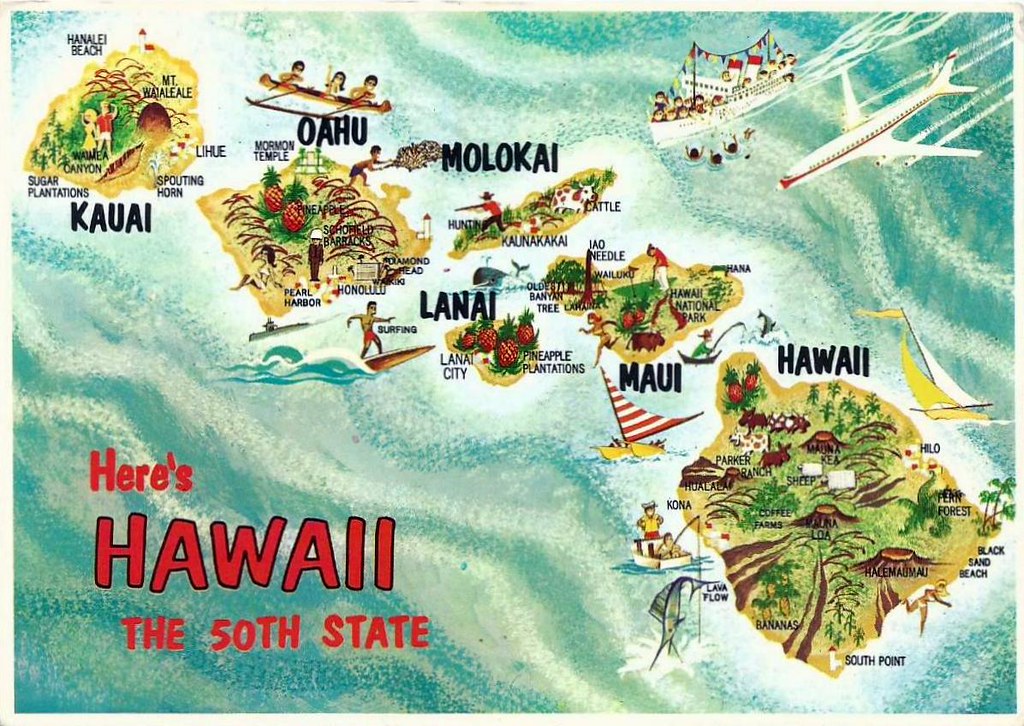
The journey to statehood for Hawaii was long, complicated, and deeply intertwined with issues of sovereignty, identity, and geopolitics. On August 21, 1959, Hawaii joined the union, becoming the 50th state and forever altering its place in world history. While the legal and political status of Hawaii has been settled in the eyes of the U.S. government, the story continues to evolve as Native Hawaiians and allies push for recognition, justice, and cultural revival. Understanding when—and how—Hawaii became a state invites us to look more deeply into American history and the complexities of nationhood.
Here is another blog post from us at Northshore Zipline that talks about Hawaii's unique and diverse group of cultures:
https://nszipline.com/wp-admin/post.php?post=1000&action=edit
In Hawai‘i, few traditions are as iconic and meaningful as the lei. These handcrafted garlands—made from flowers, leaves, shells, seeds, or feathers—embody the essence of aloha, representing love, friendship, celebration, and respect. Worn with pride and given with intention, they are far more than decorations; they are powerful cultural expressions with deep historical roots.
The practice of making and wearing floral lei's was introduced to Hawai‘i by Polynesian voyagers who settled the islands centuries ago. Along with agricultural knowledge and spiritual beliefs, they brought customs that would evolve into uniquely Hawaiian practices. Adornments made from native materials—maile vines, fragrant blossoms, polished seeds, and more—became an integral part of everyday life and ceremonial occasions.
In ancient Hawai‘i, these garlands marked significant moments and conveyed social status or spiritual reverence. Chiefs (ali‘i) wore intricate designs crafted from rare or sacred elements to display their rank and power. The creation process, known as haku, was a blend of artistry and reverence, often performed with chants and care, reinforcing a deep connection to the land and the gods.
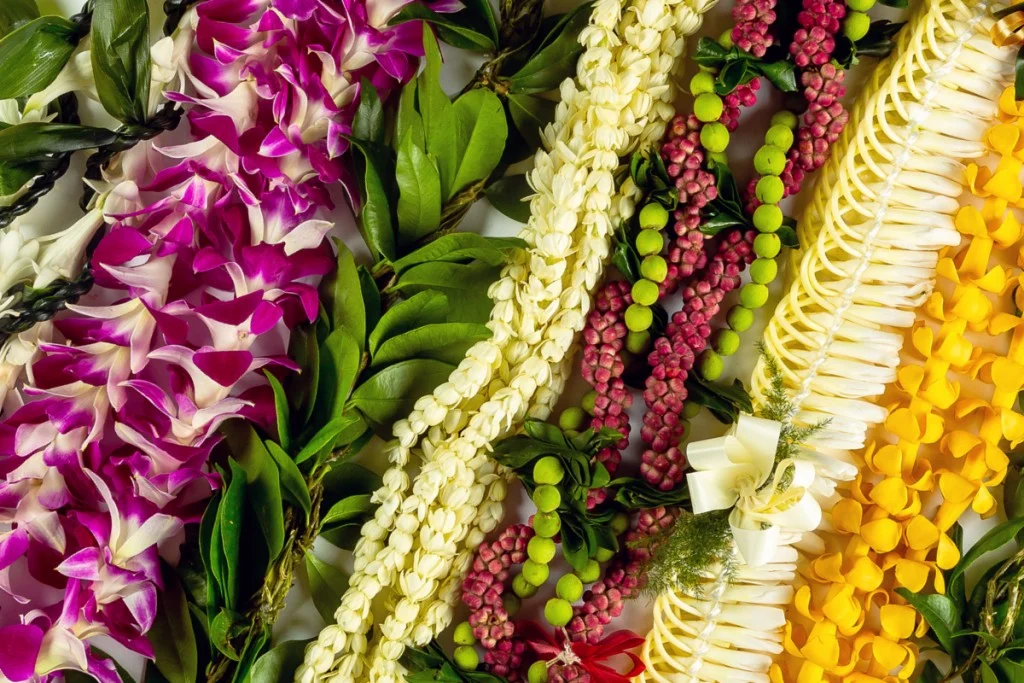
At the heart of this tradition lies the Hawaiian value of aloha, a word rich with meaning—love, compassion, kindness, and mutual respect. Presenting a lei to someone is not simply a gift; it is a gesture of connection, gratitude, and affection. It speaks without words, offering a bond between giver and receiver.
Different materials hold specific meanings. Maile vines, used in weddings and important ceremonies, symbolize peace and honor. Pikake (jasmine) is linked to romance and elegance, while orchids and plumeria are favorites for festive occasions due to their vibrant colors and scents. Kukui nuts, shiny and dark, are associated with enlightenment, protection, and peace.
In Hawaiian etiquette, such offerings should be accepted graciously. Refusing or removing one in the presence of the giver can be seen as disrespectful, as each is given with heartfelt intention.
To honor the tradition and its cultural importance, Hawai‘i celebrates Lei Day each year on May 1st. Established in 1927, this holiday pays tribute to the craftsmanship, symbolism, and enduring relevance of these floral expressions. Across the islands, schools and communities host parades, hula performances, musical events, and lei-making competitions.
Each island has a flower and color associated with it. For instance, O‘ahu is represented by the golden ‘ilima, while Maui is symbolized by the pink lokelani rose. These distinctions highlight both the diversity and unity of Hawaiian identity, proudly displayed during Lei Day festivities.
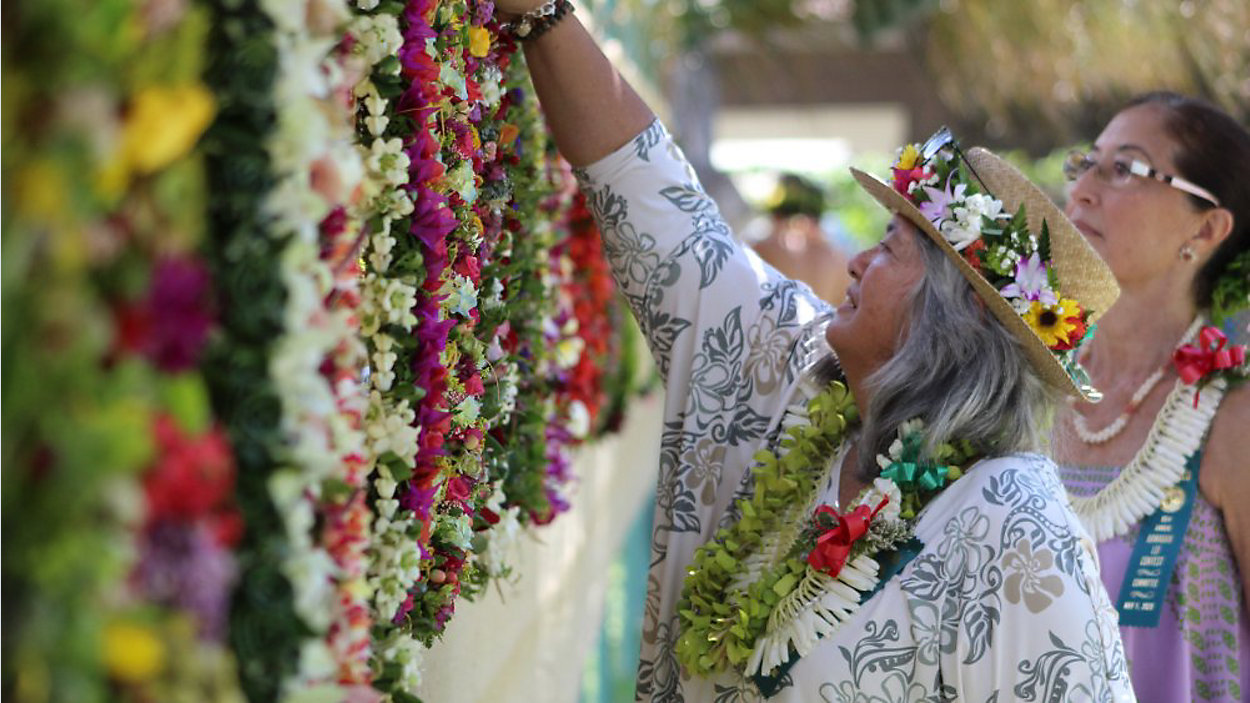
This link will give more history and significance on Lei day in Hawaii:
Traditional lei-making involves several distinct techniques:
Creating one is often a meditative process. Many artisans gather materials mindfully, offering thanks or chanting in acknowledgment of nature’s gifts. The final product is more than a beautiful adornment—it is a reflection of thoughtfulness, respect, and artistry.
The Haku Lei: A Braided Symbol of Hawaiian Tradition
The Haku lei is one of the most cherished and visually striking forms of lei in Hawaiian culture. Unlike the typical stringed garland, this version is carefully braided or woven using fresh flowers, greenery, and sometimes ferns, into a flexible base—often worn around the head like a crown.
Rooted in ancient tradition, the Haku style has long been associated with celebration, honor, and connection to nature. Whether worn for weddings, hula performances, graduations, or festivals, it carries a deep sense of pride and reverence. Each one is handmade with intention, often combining blooms and foliage with symbolic meanings to reflect the occasion or individual being honored.
More than a beautiful adornment, the Haku lei embodies the Hawaiian values of aloha (love), pono (righteousness), and kuleana (responsibility). In both traditional and modern ceremonies, it remains a vibrant expression of heritage and artistry.
Today, these garlands continue to hold a central place in Hawaiian life. They’re shared at graduations, birthdays, weddings, farewells, and other milestones. Whether used to welcome a guest, honor an achievement, or commemorate a loved one, each creation carries a message—a tangible expression of aloha.
Though materials and designs may evolve, the core meaning endures. Each garland tells a story of connection and culture, linking generations and celebrating the beauty of human relationships. In every gift, every flower, and every thread, the soul of Hawai‘i is alive and flourishing.
Check out more of our many blogs about Hawaii here!
Mahalo!
The Hawaiian Islands, a captivating archipelago located in the central Pacific Ocean, are among the most iconic travel destinations in the world. With their lush tropical landscapes, volcanic peaks, pristine beaches, and rich cultural heritage, the islands offer a unique blend of natural beauty and human history that continues to enchant visitors and locals alike.
Hawaii is the 50th state of the United States and consists of 137 islands, though the primary focus lies on the eight major islands: Hawaiʻi (often referred to as the Big Island), Maui, Oʻahu, Kauaʻi, Molokaʻi, Lānaʻi, Niʻihau, and Kahoʻolawe. These islands were formed by volcanic activity over millions of years, as the Pacific tectonic plate slowly moved over a geological hotspot. The result is a chain of islands that vary widely in size, landscape, and ecosystem.
Each island possesses its own distinct character. The Big Island, for instance, is known for its active volcanoes, including Kīlauea and Mauna Loa, as well as diverse climates ranging from tropical rainforests to arid deserts. Maui offers lush valleys, dramatic coastal cliffs, and the iconic Haleakalā Crater. Oʻahu, home to the state capital Honolulu and the famous Waikīkī Beach, is a cultural and economic hub. Kauaʻi, often referred to as the "Garden Isle," is renowned for its stunning natural beauty, including the Nā Pali Coast and Waimea Canyon.
Home to the capital city, Honolulu, Oʻahu is the most populated and visited island in Hawaii. Known as “The Gathering Place,” Oʻahu blends urban sophistication with tropical beauty. Visitors can explore iconic Waikīkī Beach, surf the legendary North Shore waves, hike up Diamond Head Crater, or dive into history at Pearl Harbor. The island is also rich in nightlife, dining, shopping, and cultural experiences, making it an ideal destination for first-time visitors.

Maui is renowned for its lush landscapes, luxury resorts, and the scenic Road to Hāna. It’s the second-largest Hawaiian island and offers a perfect balance of adventure and relaxation. Nature lovers flock to Haleakalā National Park to witness the sunrise from the summit of the dormant volcano, while beachgoers enjoy the golden sands of Kāʻanapali and Wailea. During the winter months, Maui is also one of the best spots in the world for whale watching.

Here are many informational blogs of Maui we have posted:
The Big Island lives up to its name — it’s larger than all the other islands combined. It boasts a diverse range of climates and terrains, from snow-capped mountains to black sand beaches and active lava flows. Hawaiʻi Volcanoes National Park is the crown jewel, where visitors can see Kīlauea and Mauna Loa, two of the world’s most active volcanoes. The Big Island is also a hub for astronomy, coffee farming (especially Kona coffee), and marine life encounters like manta ray night dives.
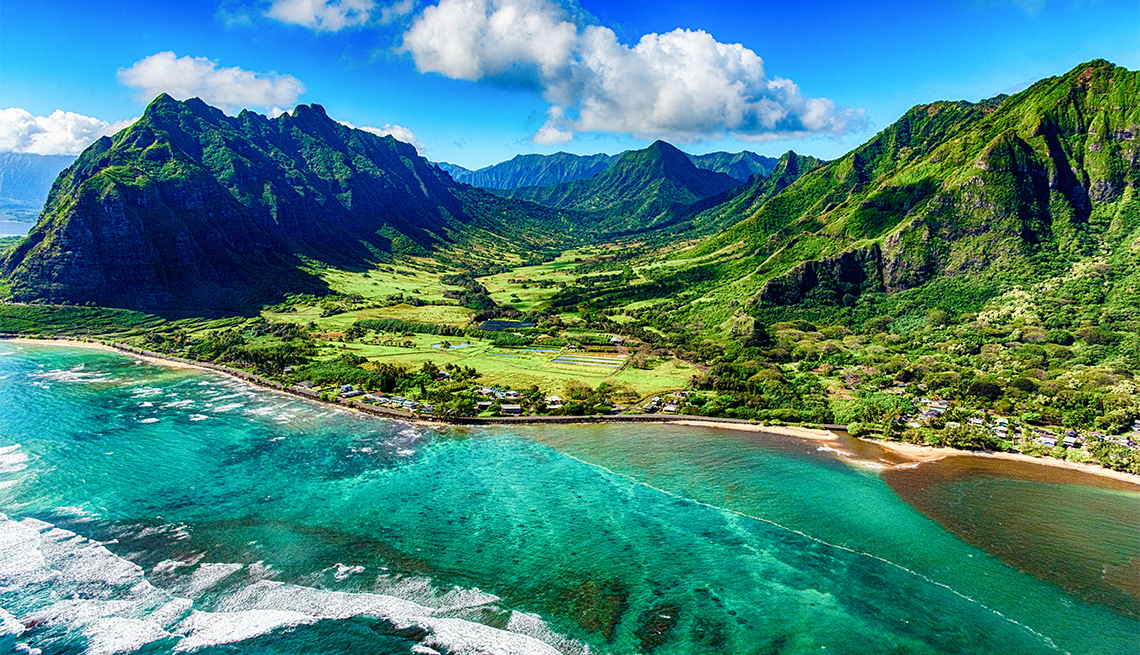
Kauaʻi is the oldest and most lush of the main islands, often dubbed “The Garden Isle” for its emerald valleys, waterfalls, and dense rainforests. It’s a paradise for hikers and nature lovers, offering jaw-dropping trails through the Nā Pali Coast and Waimea Canyon, also known as the “Grand Canyon of the Pacific.” With a more laid-back vibe, Kauaʻi is ideal for those looking to escape the crowds and reconnect with nature.
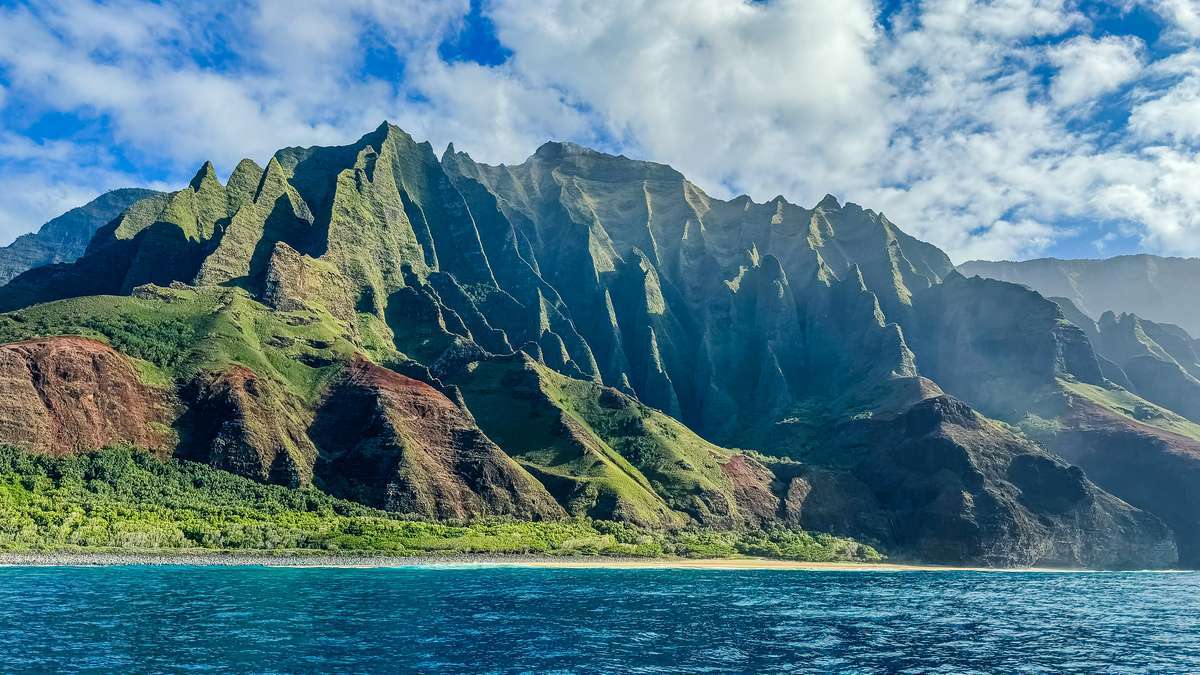
Once the world’s largest pineapple plantation, Lānaʻi today is a quiet, luxurious retreat. It’s one of the least populated islands and offers a tranquil atmosphere with upscale resorts, rugged landscapes, and off-the-beaten-path adventures. Visitors can explore Keahiakawelo (Garden of the Gods), go horseback riding, or snorkel in Hulopoʻe Bay. It’s a perfect getaway for privacy and pampering.
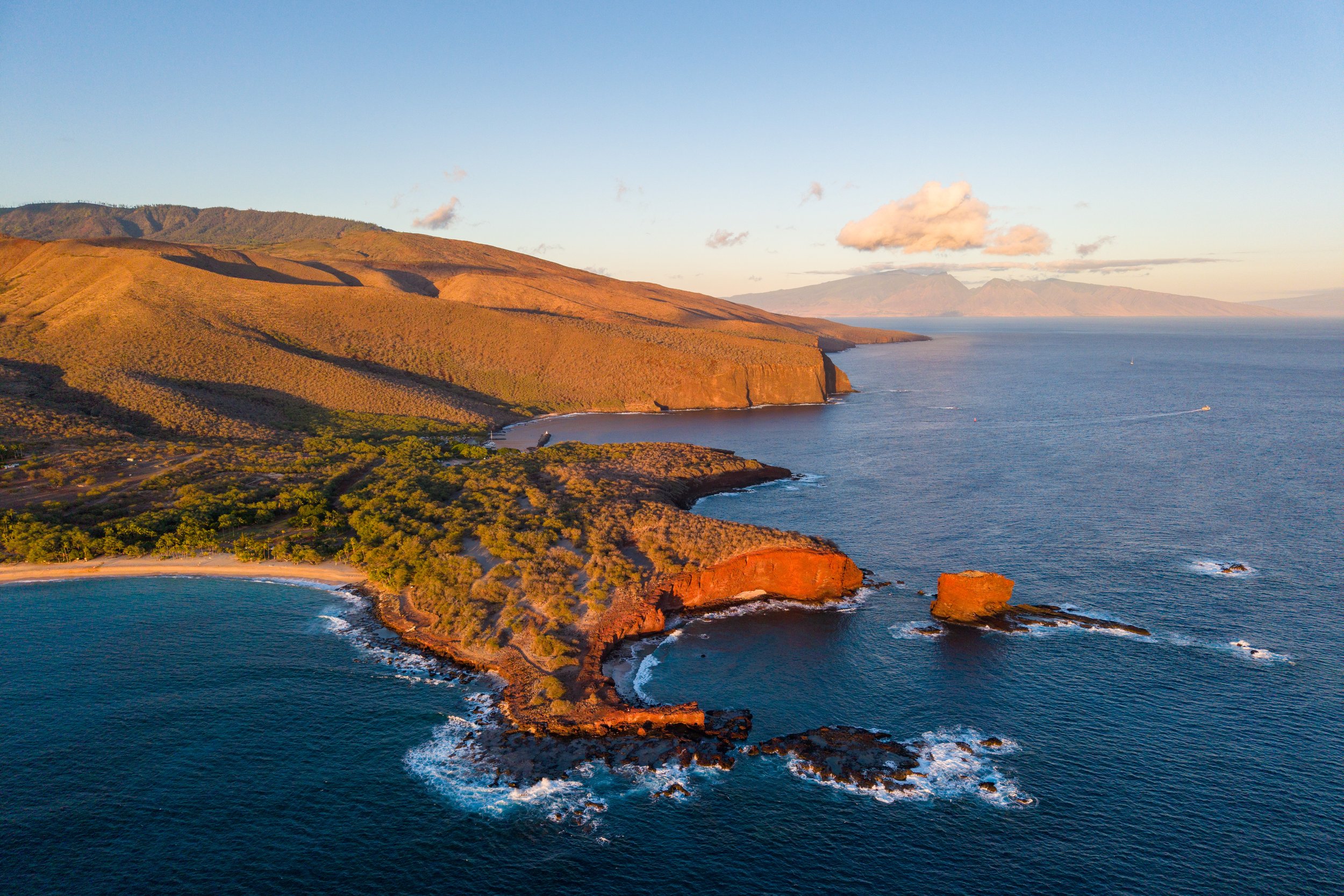
Molokaʻi is a place where Hawaiian traditions and community values remain deeply rooted. Known as “The Friendly Isle,” it offers a glimpse into what Hawaii might have looked like decades ago. There are no major resorts or high-rise buildings — just unspoiled beauty and genuine aloha spirit. Highlights include Kalaupapa National Historical Park, Halawa Valley, and the tallest sea cliffs in the world.
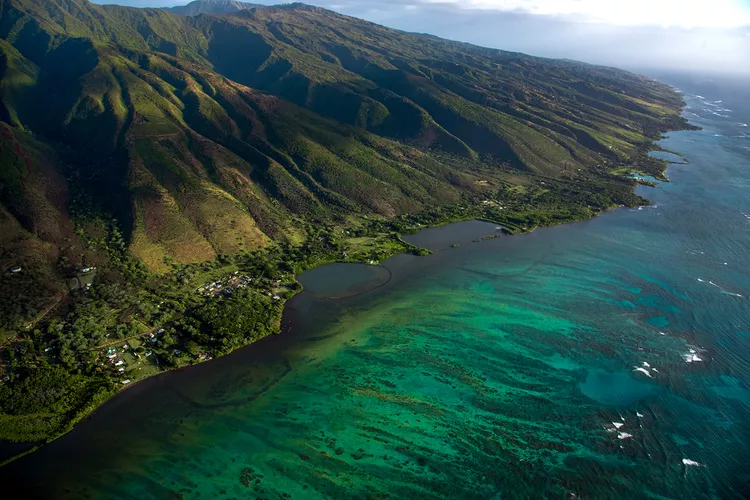
Privately owned and off-limits to most tourists, Niʻihau is often referred to as “The Forbidden Isle.” With a small population of Native Hawaiians, the island has preserved traditional Hawaiian culture and language. Access is typically limited to invited guests or through helicopter tours. Its isolation makes it a place of cultural significance and mystery.
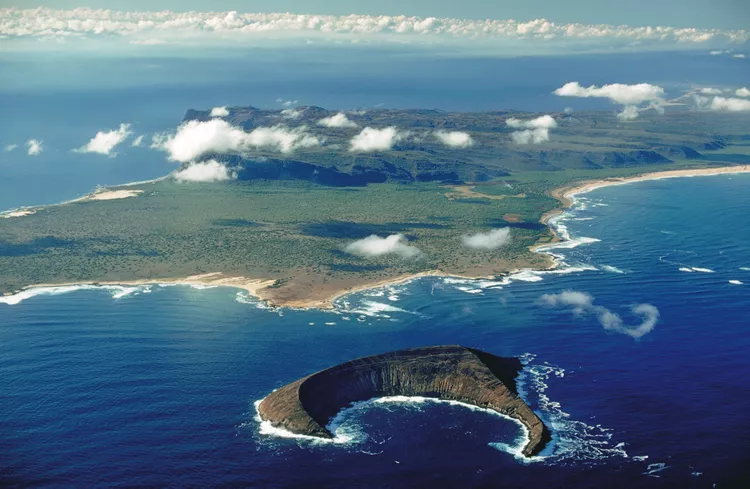
Uninhabited and largely inaccessible, Kahoʻolawe has a complex history. Once used as a military training ground, it is now the focus of ongoing restoration efforts. Considered sacred by Native Hawaiians, it is not open to casual tourism, but serves as a symbol of cultural renewal and ecological healing.
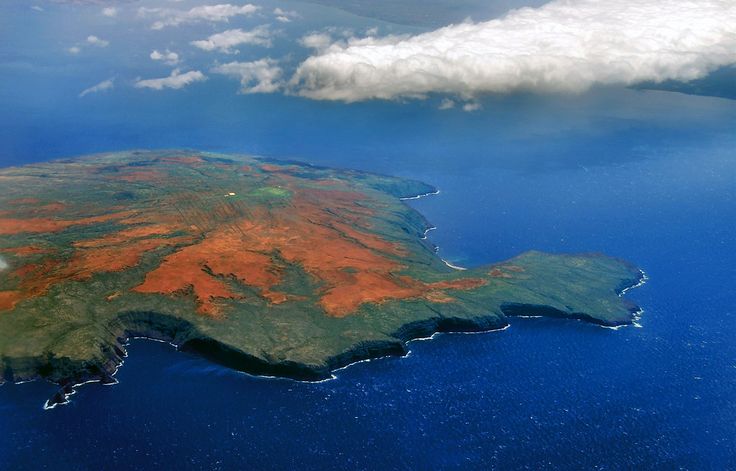
Beyond its natural allure, Hawaii holds a deeply rooted cultural legacy that traces back to Polynesian voyagers who first settled the islands around 1,500 years ago. These early settlers brought with them advanced knowledge of star navigation, agriculture, and societal organization, laying the foundation for a thriving indigenous culture.
The Hawaiian language, hula dance, traditional chants ('oli), and spiritual beliefs remain vital aspects of Hawaiian identity. While these traditions were once suppressed following Western colonization and the eventual annexation of Hawaii by the United States in 1898, there has been a powerful cultural renaissance in recent decades. Native Hawaiian communities have been working tirelessly to revitalize language and customs, advocating for greater recognition and sovereignty.
Visitors to Hawaii have the opportunity to engage with this living culture through authentic experiences such as attending a traditional lūʻau, visiting heiau (ancient temples), or exploring museums and cultural centers like the Bishop Museum in Honolulu or the Lyman Museum on the Big Island.
Hawaii is also one of the most ecologically diverse regions in the world. Due to its isolation and varied topography, it is home to a high number of endemic species — plants and animals found nowhere else on Earth. From the colorful Hawaiian honeycreepers to the endangered Hawaiian monk seal, the islands’ biodiversity is both fascinating and fragile.
However, this ecological uniqueness comes with challenges. Invasive species, climate change, and urban development have placed significant pressure on Hawaii’s native ecosystems. Conservation efforts are critical, and many organizations are actively involved in habitat restoration, native species protection, and sustainable tourism initiatives. Visitors can contribute by respecting local wildlife guidelines, participating in eco-tours, and supporting conservation-focused businesses.
Central to Hawaiian culture is the concept of aloha, a word often used to say hello or goodbye, but which carries a much deeper meaning. Aloha represents love, compassion, respect, and a sense of connection between people and the natural world. This spirit of aloha is palpable across the islands and influences everything from interpersonal interactions to community values.
Embracing the spirit of aloha means more than enjoying a vacation in paradise — it encourages a respectful and mindful approach to travel, recognizing the importance of preserving Hawaii’s environment and honoring its indigenous heritage.
The Hawaiian Islands are far more than a postcard-perfect getaway. They are a living tapestry of geology, biodiversity, and cultural history that continues to evolve. Whether you're hiking through volcanic craters, swimming in coral reefs, or learning the stories of ancient Hawaiian chiefs, the islands offer countless opportunities for discovery and connection.
As tourism continues to shape the islands’ future, a commitment to responsible travel and cultural respect is essential. By engaging with the land and its people with intention and humility, visitors can ensure that the magic of Hawaii endures for generations to come.
Check out more of our many blogs about Hawaii here!
Mahalo!
Sitting along the emerald hills of Maui’s lush north shore lies Haiku, a charming upcountry village that offers a refreshing alternative to the island’s busy beach resorts. Known for its misty jungles, rolling pastures, and laid-back vibe, Haiku is a hidden gem that draws in adventurers, artists, and travelers seeking authentic connection — to nature, culture, and themselves.
Whether you’re planning a full stay in Haiku or a quick detour off the Road to Hana, this peaceful community has much to offer. Here's how to make the most of your time in Haiku, Maui.
Kick off your adventure with a visit to Twin Falls, one of the most accessible and rewarding waterfall hikes on the island. Located just past mile marker 2 on the Road to Hana, this easy-to-moderate trail weaves through bamboo forests, guava trees, and muddy jungle paths to reach a series of waterfalls and swimming holes.
Pack water shoes and a towel — and don’t be afraid to get wet! Local vendors near the trailhead often sell fresh coconuts and smoothies, perfect for a post-hike refresh.
At the heart of the village is the Haiku Marketplace, a community hub filled with local food, art, and character. Set in the historic Haiku Cannery building, the marketplace includes health-conscious eateries, a kombucha bar, artisan boutiques, a surf shop, and a well-stocked general store.
Try a locally sourced poke bowl, sip on small-batch kombucha, or grab a handmade gift to remember your trip. The vibe is casual, friendly, and authentically Maui.
No visit to Haiku is complete without a meal at Colleen’s at the Cannery, a beloved local staple located in the historic Haiku Cannery building. This laid-back café and bar serves up hearty breakfasts, fresh island-inspired lunches, and cozy dinners — all with a focus on quality ingredients and welcoming service.
Whether you’re fueling up before a waterfall hike or winding down after a day on the Road to Hana, Colleen’s offers something for everyone. Locals rave about the banana macadamia nut pancakes, wood-fired pizzas, and daily fish specials. The open-air seating, rustic charm, and local artwork make it a perfect spot to soak in the upcountry vibe.
Bonus: The espresso bar and cocktail menu are just as good as the food.
Haiku’s lush landscape is best explored with the help of local guides who know the trails and hidden gems. Eco-adventure tours offer a chance to hike off the beaten path, explore secret waterfalls, swing into jungle pools, and learn about native Hawaiian flora and history.
Whether you’re a family with kids or a solo explorer, these tours provide safe, insightful access to Haiku’s wild beauty — often with fresh fruit picked right from the trail.
For adrenaline with a view, NorthShore Zipline in Haiku delivers an unforgettable experience. Set on a historic World War II base in the lush upcountry jungle, this family-friendly zipline tour features seven lines, sky bridges, and soaring platforms with panoramic views of Maui’s north shore.
It’s the perfect mix of adventure and natural beauty — with expert guides, a safe and fun environment, and just enough thrill to keep your heart racing. Great for first-timers and seasoned zipliners alike, NorthShore Zipline is a must-do for anyone looking to add excitement to their Haiku itinerary.
Check out tour availabilities here!
Though technically just outside Haiku in nearby Paia, Ho’okipa Beach Park is an essential stop. Known as a global windsurfing mecca, it also offers jaw-dropping views of the coastline and excellent sea turtle spotting — especially in the late afternoon.
Bring a camera and take a walk down to the beach where you’re likely to see dozens of honu (Hawaiian green sea turtles) basking on the sand.

Haiku is home to a vibrant community of yogis, healers, and wellness seekers. It’s not uncommon to find yourself attending a sunrise yoga session overlooking a jungle valley, or joining a sound healing circle beneath the stars.
Many local retreat centers and eco-lodges offer single-day experiences or longer stays focused on mindfulness, nature connection, and self-care. Whether you're looking to deepen your practice or simply unwind, Haiku is a sanctuary for the soul.
Haiku serves as a perfect starting point for the legendary Road to Hana — one of the world’s most scenic drives. If you’re short on time or not ready to brave the full route, just exploring the early portion from Haiku offers lush vistas, waterfalls, botanical gardens, and coastal lookouts.
Be sure to drive carefully — the roads are narrow and winding, but the rewards are immense. Starting early from Haiku gives you a head start on the crowds.
Haiku may be small, but it packs a flavorful punch. From Thai food trucks to vegan cafés and fresh fruit stands, there’s no shortage of delicious options. Try local specialties like taro chips, lilikoi (passion fruit) treats, or fresh-baked banana bread.
For an unforgettable evening, check out Nuka, a beloved Japanese restaurant known for sushi made with locally caught fish and seasonal island ingredients. Reservations recommended — this spot is a favorite among locals and visitors alike.
Haiku is more than a place — it’s a feeling. A slow-paced, rain-kissed, quietly magical corner of Maui where life flows with the rhythms of the land. Here, you’ll trade crowded beaches for bamboo trails, loud nightlife for waterfall serenades, and screen time for starlit skies.
If you’re craving a deeper, more grounded connection to Hawaii — one rooted in nature, culture, and community — Haiku awaits with open arms and endless green horizons.
Travel Tips:
Sitting on the windward side of Maui, Haiku is a hidden gem that captures the heart of every nature enthusiast with its verdant beauty and tranquil atmosphere. While Maui is often celebrated for its sandy beaches and crystal-clear waters, Haiku offers a different kind of wonder—its lush rainforest, where exotic plants thrive under the island’s abundant rainfall and rich volcanic soil. For botanists, horticulturists, and casual plant lovers alike, Haiku is a paradise where the vibrant plant life tells a story of resilience, biodiversity, and tropical enchantment.
Haiku lies in the region known as Maui’s North Shore, a microclimate characterized by frequent rain showers, warm temperatures, and mist-covered hills. This perfect combination has created the ideal environment for a thriving rainforest ecosystem. The region is home to both native Hawaiian plants and a variety of introduced tropical species that now flourish in the fertile soil.
One of the most iconic plants in Haiku's rainforests is the ʻŌhiʻa lehua (Metrosideros polymorpha), a native Hawaiian tree with distinctive red, orange, or yellow pom-pom-like blossoms. This tree is vital to the local ecosystem, providing food for native birds such as the ʻapapane and ʻiʻiwi. In Haiku’s cooler upland areas, the ʻōhiʻa often dominates the canopy, its twisted branches cloaked in mosses and epiphytic ferns.
Another standout is the towering tree fern (Cibotium spp.), known in Hawaiian as hāpuʻu. These ancient plants unfurl their fronds in graceful spirals, creating a sense of prehistoric wonder as they arch over muddy trails and shaded gulches. The hāpuʻu is often accompanied by native understory plants like paʻiniu (Astelia spp.), a spiky, silver-green plant with tufts of fragrant flowers that attract native insects.
The hala tree (Pandanus tectorius) is a distinctive and culturally important plant found across Maui’s coasts and rainforests. Recognized by its spiky leaves, pineapple-like fruit, and stilt-like roots, the hala plays a vital role in stabilizing soil and supporting coastal ecosystems. In Hawaiian culture, the hala was invaluable—its leaves were woven into mats and baskets, roots used for tools, and fruit for dyes and emergency food. Today, it remains a symbol of resilience and tradition, linking Maui’s natural beauty with its rich cultural heritage.
The ti leaf plant (Cordyline fruticosa), known locally as lāʻī, is one of Maui’s most revered and widely used plants. With its glossy green or reddish leaves, the ti plant is not only visually striking but deeply embedded in Hawaiian culture, spirituality, and daily life.Traditionally, ti leaves were used for everything from wrapping food and weaving lei to creating hula skirts and protective amulets. Believed to offer spiritual protection, they are still planted around homes and temples to ward off negative energy. In ceremonies and celebrations, ti leaves symbolize blessing, purification, and good luck.
Tropical fruit trees and ornamental plants abound in Haiku as well. You’ll find sprawling avocado trees, vibrant hibiscus blooms, heliconias with their lobster-claw-shaped flowers, and the show-stopping bird of paradise (Strelitzia reginae), which resembles a tropical bird mid-flight. These plants are a testament to the rich cultural history of Hawaii, reflecting centuries of agricultural and ornamental introductions by Polynesian voyagers and later settlers.
The ʻawapuhi plant (Zingiber zerumbet), commonly known as shampoo ginger, is a cherished botanical treasure in Maui’s lush rainforests. Known for its vibrant green stalks and striking red pinecone-like flower heads, ʻawapuhi is both beautiful and functional, thriving in the island’s humid, tropical environments.Used for centuries by Native Hawaiians, the fragrant juice from ʻawapuhi’s mature flower cones served as a natural shampoo and skin conditioner—hence its nickname. Beyond personal care, ʻawapuhi has been valued in traditional medicine for its soothing, anti-inflammatory properties and as a treatment for digestive and respiratory ailments.
Haiku’s rainforests are also rich with non-native, yet spectacularly lush tropical plants introduced from Asia, Africa, and South America. Bamboo groves are common in the area, especially around old plantations and homesteads. While bamboo is not native to Hawaii, its rapid growth and striking appearance make it a defining feature of Haiku's landscape. The towering stalks and rustling leaves create a mesmerizing experience for those hiking through its dense thickets.
Perhaps the most enchanting aspect of Haiku’s plant life is how it integrates with the region’s laid-back lifestyle and strong connection to the land. Local residents cultivate lush gardens and food forests, blending native and exotic species into sustainable ecosystems. From taro patches to tropical spice trees like allspice and cinnamon, the flora in Haiku reflects a harmonious balance between human habitation and nature.
For visitors, walking through Haiku's rainforest trails is more than a visual treat—it’s an immersion in a living, breathing world of color, texture, and fragrance. Whether you're exploring the jungle paths of Twin Falls or simply enjoying the view from a rainforest retreat, the plant life of Haiku speaks to the island’s incredible natural wealth and the deep respect its people have for the environment.
In an age where biodiversity is increasingly threatened, Haiku stands as a vibrant reminder of what is possible when nature is allowed to flourish. The rainforest plants of this Maui enclave continue to inspire awe, nurturing not only the land but the spirit of those who walk beneath their leafy canopy.
Nestled along the famed Road to Hana on the eastern side of Maui, the Pipiwai Trail offers one of the most captivating hiking experiences in Hawaii. Known for its diverse scenery—including lush rainforest, a towering bamboo forest, and the awe-inspiring Waimoku Falls—this trail attracts nature lovers, adventure seekers, and photographers alike. Whether you’re seeking a serene walk through a tropical paradise or a rewarding trek to one of Maui’s most spectacular waterfalls, the Pipiwai Trail offers an unforgettable journey into the heart of Hawaiian wilderness.
The Pipiwai Trail is part of Haleakalā National Park, which encompasses the Kipahulu region along the coast and the summit area of the Haleakalā volcano. While the road to reach the trailhead is winding and narrow, the journey itself is part of the adventure, offering stunning coastal views, waterfalls, and lush scenery.
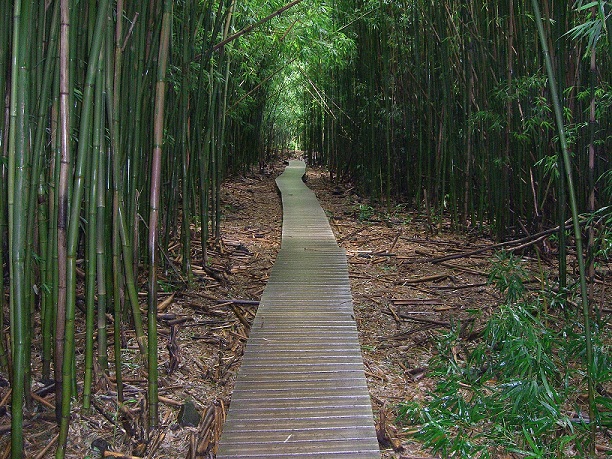
The adventure begins immediately upon stepping onto the trail, where you are greeted by the soothing sounds of rustling leaves and chirping birds. The first section of the trail winds through a tropical rainforest, with a canopy of towering trees offering intermittent shade. You’ll pass by vibrant guava trees, wild ginger, and ferns that thrive in the humid environment.
As you ascend, you’ll cross wooden footbridges over gently flowing streams, adding to the tranquil ambiance. The trail’s terrain alternates between packed dirt, wooden boardwalks, and rocky patches, making proper footwear essential.
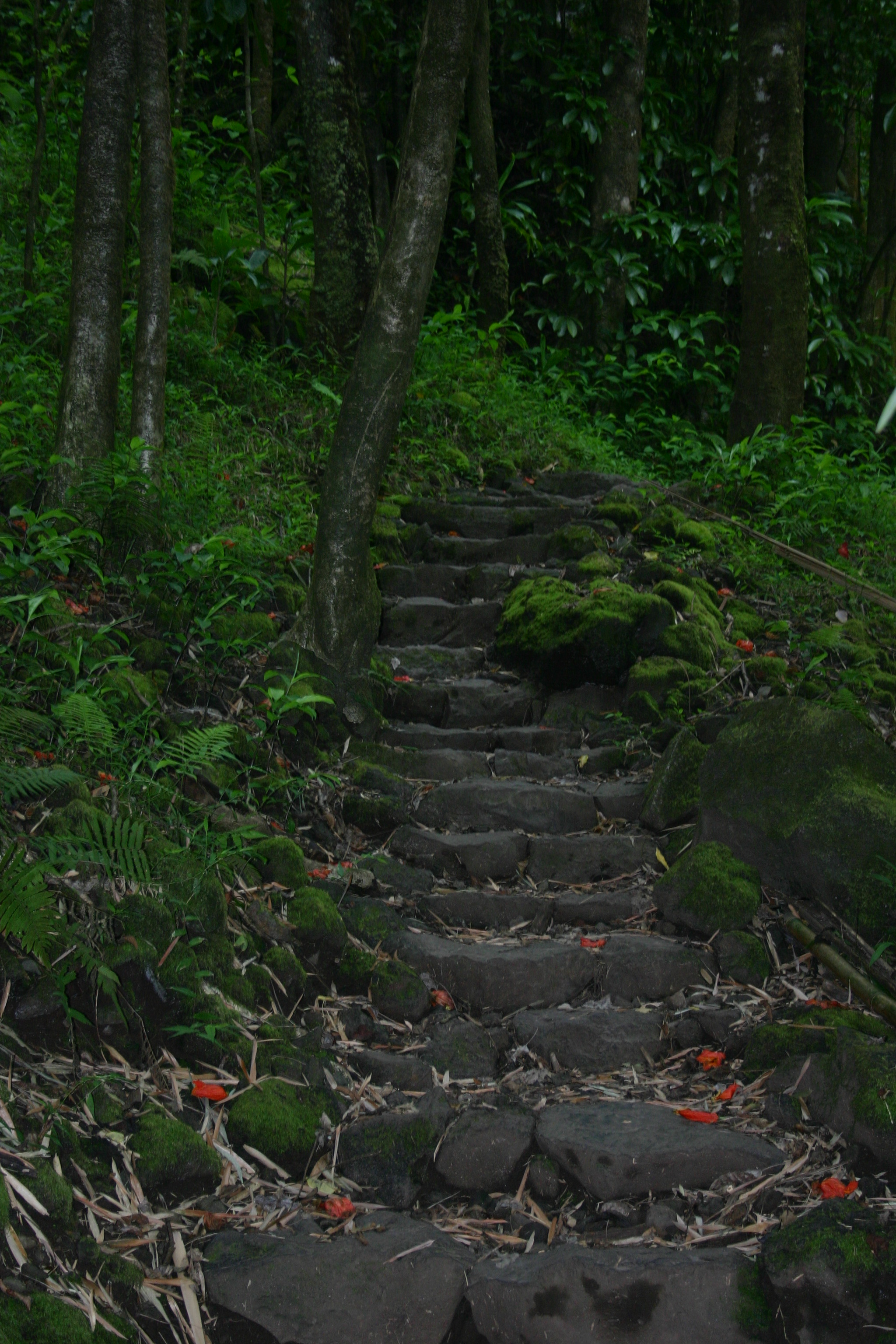
One of the most breathtaking highlights of the hike is the famous bamboo forest. About a mile into the trail, you’ll transition from the dense rainforest into an entirely different ecosystem. Towering bamboo stalks, some reaching over 60 feet high, form a striking tunnel-like corridor. The soft, filtered light creates an ethereal glow, especially during the morning hours.
As the wind passes through the grove, the bamboo stalks clatter gently, creating a calming, almost melodic sound. To protect the fragile forest floor, the park service has installed an elevated boardwalk that makes this section easy to navigate, even after rain. This stretch of the hike offers some of the most picturesque photo opportunities, with long, symmetrical lines of bamboo creating a magical atmosphere.

Roughly half a mile in, you’ll reach an overlook offering a spectacular view of Makahiku Falls, a 200-foot cascade that plunges into a hidden pool below. Though smaller than the final waterfall on the trail, Makahiku Falls is still a stunning sight. On sunny days, you may spot rainbows shimmering in the mist at the base of the falls.
This overlook provides a perfect spot to rest, hydrate, and snap some photos. However, resist the urge to venture off the trail—climbing closer to the falls or attempting to reach the pool below is dangerous and strictly prohibited.
The climax of the Pipiwai Trail is the awe-inspiring Waimoku Falls, which towers 400 feet over the lush rainforest below. The sight of this majestic waterfall cascading down a sheer lava rock wall is nothing short of breathtaking. The spray from the falls creates a refreshing mist, and the entire scene feels like something out of a dream.
The area around the falls is filled with large boulders and thick vegetation, creating a natural amphitheater. While it may be tempting to approach the waterfall or wade into the pool below, it is strongly discouraged due to the risk of falling rocks, which can be fatal. Instead, enjoy the view from a safe distance and take in the grandeur of one of Maui’s most iconic natural wonders.
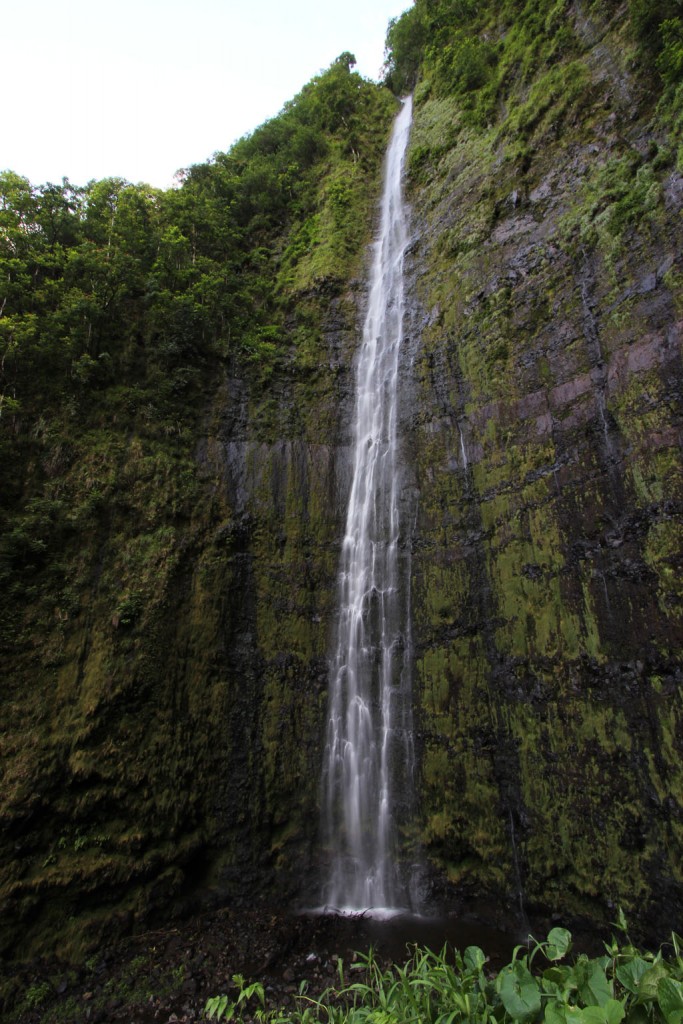
The Pipiwai Trail is open year-round, but the best time to visit is during the dry season (April to October) when the weather is more predictable and the trail conditions are drier. During the wet season (November to March), the trail can become muddy and slippery, and flash floods are more common, making stream crossings dangerous.
For the most enjoyable experience:
The Pipiwai Trail is a dream for photographers, offering diverse and stunning scenery at every turn. Some of the best photo opportunities include:
For the best lighting, aim to start your hike early in the morning or later in the afternoon, when the sun casts a golden glow through the bamboo forest.
While the Road to Hana offers plenty of scenic stops and short trails, the Pipiwai Trail is a standout experience that showcases the true beauty of Maui’s tropical landscape. From the serene rainforest paths to the awe-inspiring waterfalls, every section of this trail is a testament to Hawaii’s natural splendor.
Whether you’re chasing waterfalls, marveling at the enchanting bamboo forest, or simply enjoying the peaceful sounds of nature, the Pipiwai Trail offers a soul-stirring adventure that will leave you with lasting memories.
along the rugged coastline of Hana, Maui, lies one of the island’s most captivating and hidden treasures: Kaihalulu Beach, more commonly known as Red Sand Beach. Famous for its striking crimson shoreline, jagged lava cliffs, and the serene, turquoise waters of the Pacific, this secluded beach offers a breathtaking escape for adventurers, photographers, and nature enthusiasts alike.
Visiting Red Sand Beach is more than just a stop on a travel itinerary—it’s an experience that engages all the senses, from the sight of its vibrant hues to the sound of the waves crashing against the volcanic rocks. Whether you’re hiking in for a scenic adventure, seeking a peaceful spot to reflect, or simply marveling at nature’s artistry, Red Sand Beach is a must-see gem on the island of Maui.
What makes Red Sand Beach truly extraordinary is its unique geological makeup. The beach’s distinctive reddish hue comes from the crumbling volcanic cinder cone that encircles the cove. The cinder cone, rich in iron oxide, erodes over time, depositing iron-rich sediment that gives the beach its deep, rust-colored sand.
The surrounding cliffs, composed of jagged lava rock, add to the beach's dramatic landscape. Their dark, rugged appearance contrasts with the vibrant red shoreline and the emerald-green foliage clinging to the rocks. The interplay of colors creates a scene that feels almost otherworldly—a place where nature’s raw beauty is on full display.
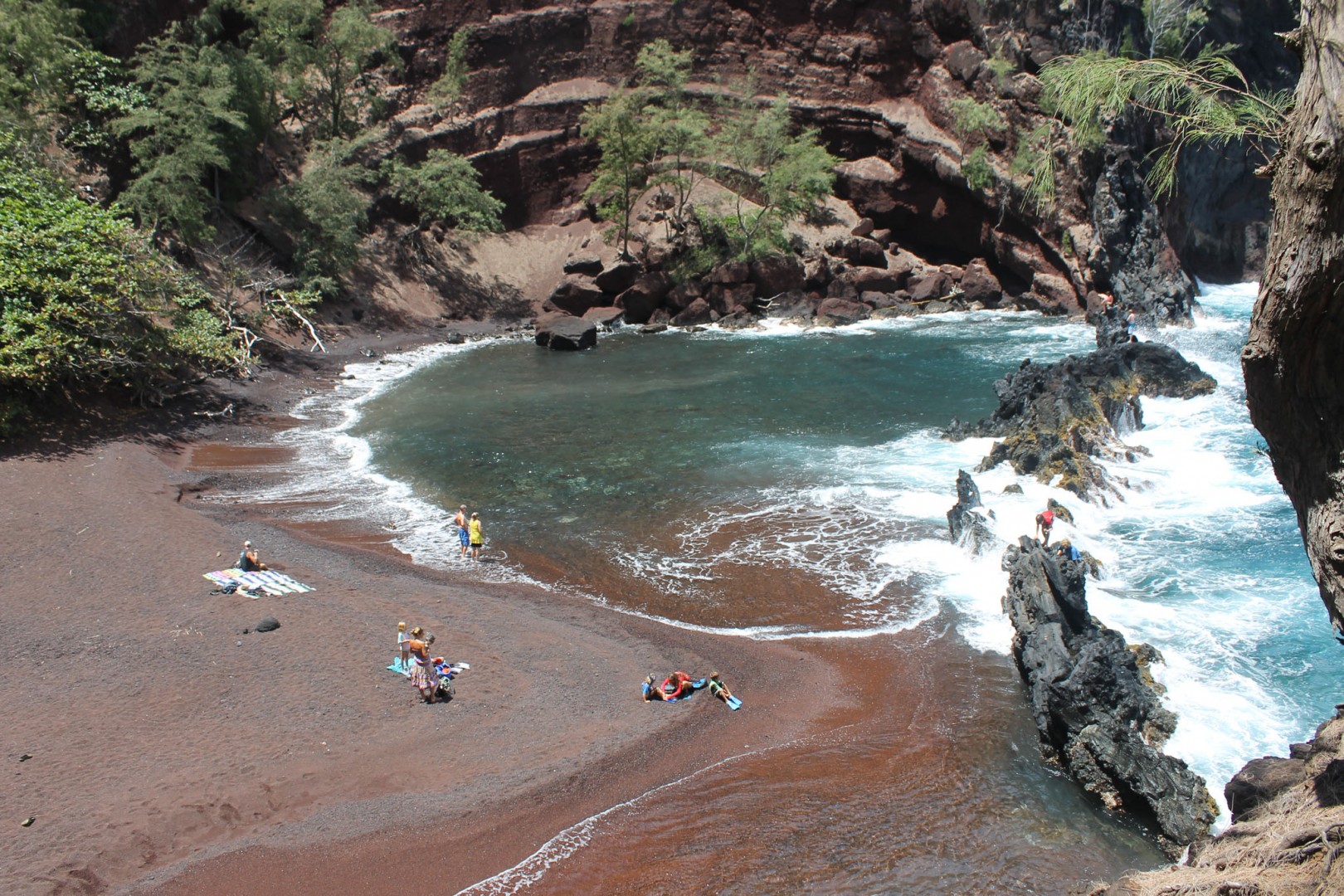
Part of the allure of Red Sand Beach lies in its secluded and somewhat challenging accessibility. Unlike Maui’s more popular beaches, reaching this hidden gem requires a short but adventurous hike.
Trail Details:
Tips for a Safe and Enjoyable Hike:
✅ Footwear Matters: Wear sturdy shoes with good traction. Flip-flops are not recommended, as the loose, gravelly sections can be slippery.
✅ Exercise Caution: The trail runs alongside steep cliffs, making it potentially hazardous, especially after rainfall when the path becomes muddy and slick. Walk carefully and avoid getting too close to the edge.
✅ Travel Light: Since the hike is short, you don’t need to bring much. However, pack essentials like water, sunscreen, and a towel.
✅ Respect Private Property: The beach lies on private land, but public access is generally allowed. Be respectful of the area and follow all guidelines.
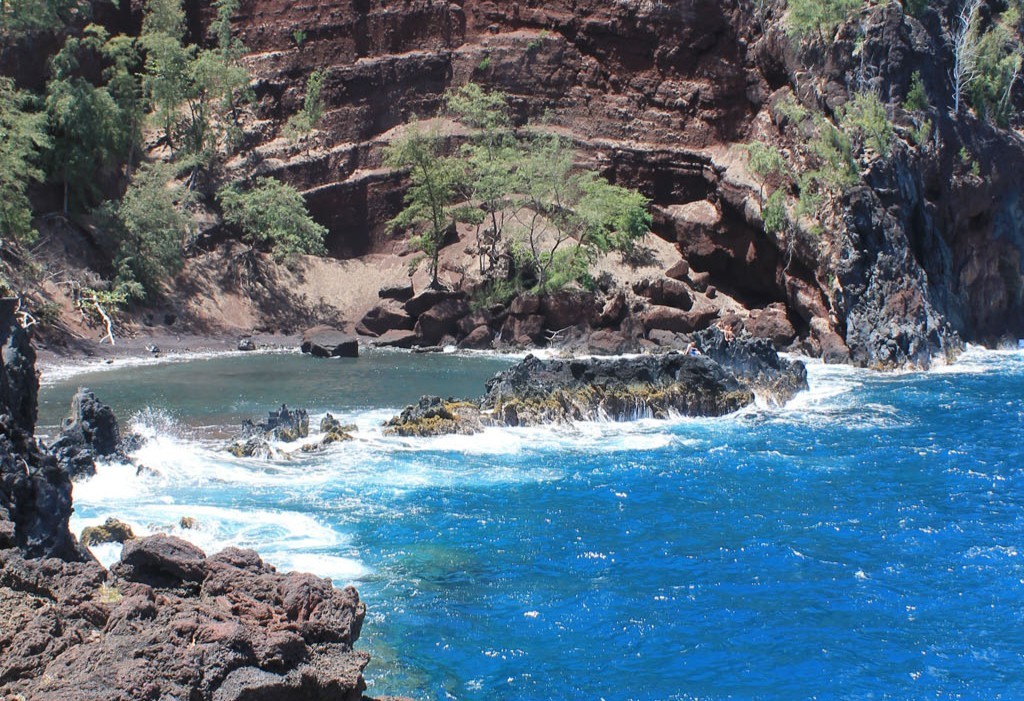
Once you arrive, you’ll be rewarded with a view that feels almost surreal. The crescent-shaped cove, embraced by steep lava rock cliffs, creates a sense of seclusion and intimacy. The beach’s vibrant red sand is soft underfoot, and the surrounding cliffs provide a natural wind barrier, making the cove feel peaceful and protected.
The offshore lava rock wall acts as a natural breakwater, creating a semi-protected swimming area with calmer waters—ideal for a relaxing dip. On calmer days, the water is clear and inviting, perfect for swimming or snorkeling.
Snorkeling Tip:
Bring your gear if you enjoy snorkeling. The reef area near the lava rock wall is home to colorful tropical fish, though visibility can vary depending on ocean conditions.
However, it’s important to note that Red Sand Beach does not have lifeguards. The water can sometimes be unpredictable, and strong currents are possible, especially beyond the protected cove. If you’re not a strong swimmer, it’s best to stay close to the shore and avoid venturing into deeper waters.
For photographers, Red Sand Beach offers endless visual inspiration. The contrast of the red sand against the blue sea and the green vegetation creates a scene that seems almost too vivid to be real.
Whether you’re capturing wide-angle shots of the entire cove or focusing on the intricate patterns in the sand, this beach offers stunning photo opportunities.
Maui’s tropical climate makes Red Sand Beach accessible year-round, but some times are better than others for a more enjoyable experience.
As with all natural wonders, it’s vital to respect and preserve the pristine environment of Red Sand Beach.
By following these guidelines, you can help keep this hidden treasure beautiful for future visitors.
Red Sand Beach in Hana, Maui, is more than just a picturesque destination—it’s a place of wonder and adventure. From the rugged hike through volcanic terrain to the vibrant, iron-rich sands and tranquil waters, the experience is nothing short of magical.
Whether you’re an avid hiker, a photographer seeking the perfect shot, or simply someone who appreciates the beauty of nature, Red Sand Beach offers an unforgettable escape. As you breathe in the salty air, feel the soft red sand beneath your feet, and gaze out at the endless Pacific, you’ll understand why this beach is one of Maui’s most treasured hidden gems. 🌴🏖️